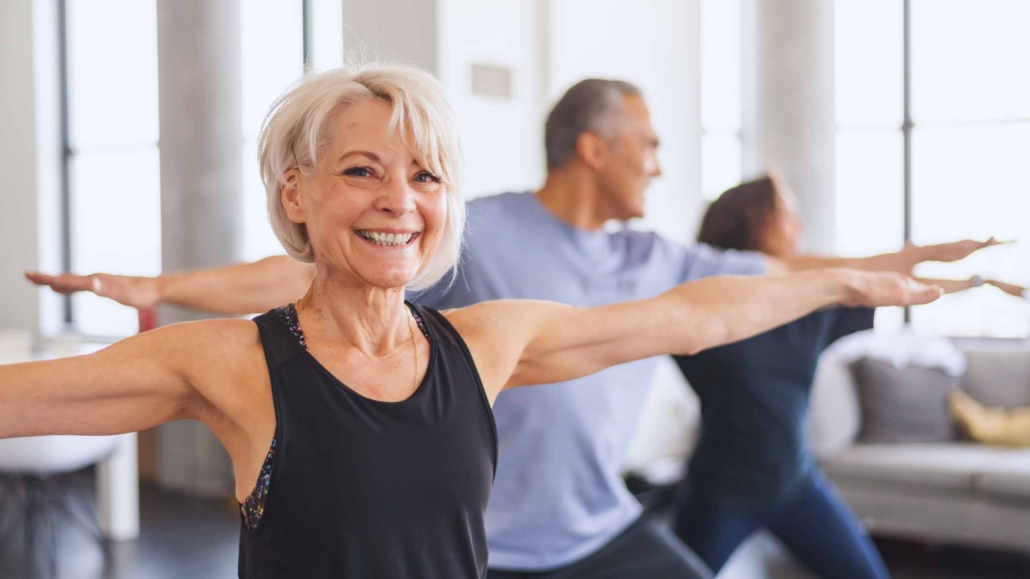Last Updated on October 30, 2024 by
Many people want to get active, but there are a lot of things that can make it hard for them. As a group exercise instructor, you know that some people feel nervous about joining a group class.
From being scared of what others think to not having enough time, these barriers are real and can feel really tough. But what if you could help your clients overcome their obstacles? The five strategies below will teach you how to do just that.
Need more ideas? Sign up as a free EMD UK member to access 250+ resources, supporting your clients while you continue to learn and grow.
Key Takeaways
- Fear of Judgment: Talk about it openly and make classes feel welcoming.
- Time Management: Offer flexible options and help participants make small changes.
- Confidence Boosting Strategies: Celebrate all efforts, not just the results.
- Inclusivity in Instruction: Encourage progress, no matter the pace or experience level.
- Create a Supportive Community: Build connections that make clients want to come back for the friendships.
Breaking Down Common Barriers to Getting Active
1. Fear of Judgment: How to Make Your Classes Safe Spaces
Many clients worry about not being fit enough, not knowing the moves, or just being judged by others for how they look during exercise. This fear is one of the biggest reasons people don’t get active.
Research from This Girl Can shows that fear of judgment is a major barrier to women getting active. Women mentioned they often feel guilt and that sport and exercise become a negative thought—worries like, “I should be healthier,” or “I’m too lazy,” are common.
Reassure participants that everyone, including you, is learning at their own pace. Saying things like, “I make mistakes too, and that’s okay!” helps show that it’s normal to mess up.
Make it fun instead of focusing on being perfect. Remind everyone that sweating, stumbling, and even laughing at yourself are all part of the process.
Share your own story of starting out and times when you felt awkward. This can help others relate and feel more comfortable.
2. Time Management: Helping Clients Find the Time
A lot of people, especially women, feel guilty for taking time away from family, work, or other responsibilities to exercise.
Encourage clients to think of exercise as “me-time” that benefits not only them but also their loved ones—because a happier, healthier person can give more to others.
Offer solutions like shorter, high-impact classes or ‘express’ workouts that fit into lunch breaks or busy schedules.
Provide flexible class schedules and share at-home workout options for those who may struggle to come in person. Even 15 minutes is better than nothing!
3. Lack of Confidence: Building Self-Belief One Class at a Time
Many people feel they aren’t fit enough even to start or are scared they won’t be able to keep up in the class.
Consider pairing new clients with more experienced participants to help them feel more comfortable. A buddy system can provide support, encouragement, and guidance, making it easier for newcomers to integrate and feel at ease.
Celebrate effort, not just the end results. Compliment those who show up, no matter how well they do.
Highlight small wins. If someone lasts longer in a cardio routine than last week, that’s a win!
Create an inclusive class culture. Use language like, “Modify the move as you need—progress looks different for everyone,” to keep everyone feeling like they belong.
It’s also helpful to have a library of modifications ready for different skill levels, so everyone can participate comfortably and safely.
4. Prioritising Activity Amid Competing Demands
Exercise can feel less important compared to work, family, or other obligations.
Remind participants that their well-being is key to being able to handle other responsibilities. Exercise can help them be better in other areas of life.
Suggest pairing workouts with other activities: like walking while catching up with a friend or doing stretches during a child’s playtime.
Regularly talk about the physical and mental benefits of exercise. Let them know it can help improve energy, reduce stress, and boost mood.
5. Inclusion and Belonging: Making Everyone Feel Welcome
Clients may feel they don’t belong due to age, fitness level, body size, or past experiences with group fitness.
Be clear in your welcome. Set the tone by saying, “This class is for everyone—whether you’re experienced or new.”
Show different movement options: advanced, moderate, and beginner versions. This helps make progress feel personal.
High-quality images can also make a significant difference in attracting new participants and creating a welcoming environment for your classes.
By showcasing diversity—such as a mix of ages, body types, and fitness levels—you make your sessions more relatable and inclusive.
Learn more about why imagery is key for group exercise instructors and how the right visuals can boost your class attendance and create a sense of community.
Final Thoughts
Helping your clients overcome the barriers to getting active is an ongoing process.
You can make a big impact on their fitness journey by addressing their fears of judgment, supporting them in finding the time, building their confidence, and making sure they feel included.
Remember, every small step is progress, and as an instructor, you’re in a unique position to celebrate these steps with your participants.
Looking for more ways to help your clients succeed?
Join us at EMD UK Instructor Revolution 2024 for an inspiring event that will equip you with new ideas, skills, and connections to help your clients thrive!



